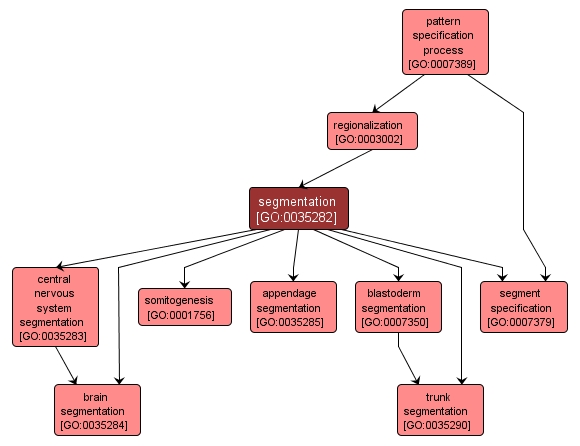GO TERM SUMMARY
|
| Name: |
segmentation |
| Acc: |
GO:0035282 |
| Aspect: |
Biological Process |
| Desc: |
The regionalization process that divides an organism or part of an organism into a series of semi-repetitive parts, or segments, often arranged along a longitudinal axis. |
|

|
INTERACTIVE GO GRAPH
|














